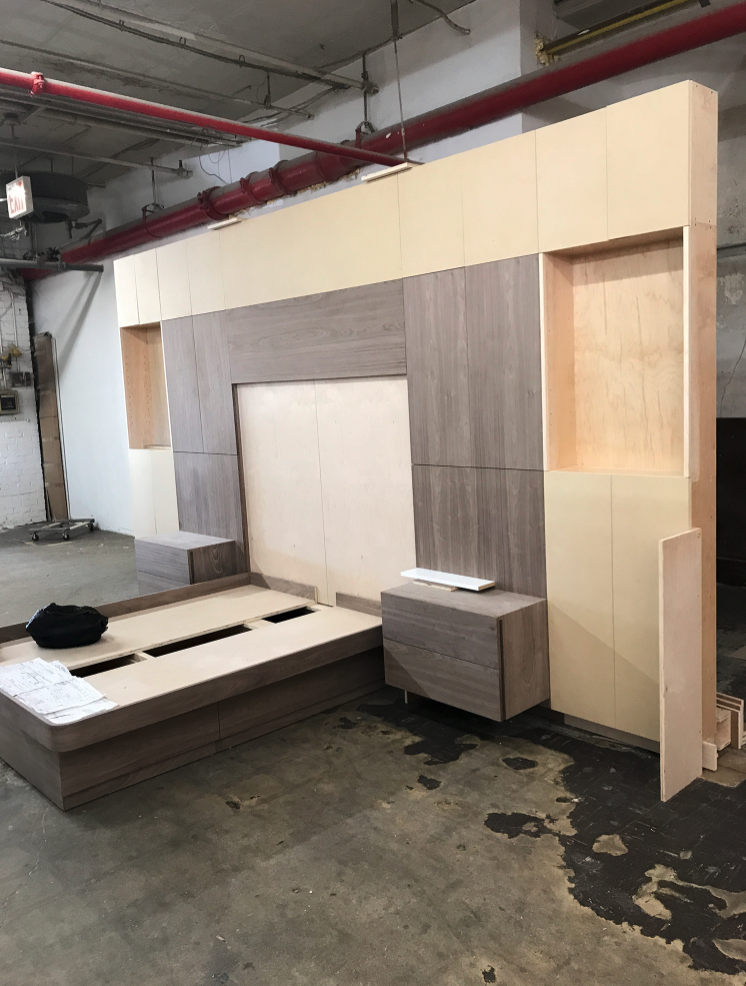Negotiating With Tradespeople: Pricing and Lead Times
We’ve all done it: had a conversation with someone where each person walked away with a completely different understanding of what was discussed. It’s just so easy to do when you assume you’re both working from the same set of facts. But, as we often learn, we aren’t. It’s not that anyone is trying to mislead; it’s that we structure our conversations on unspoken – and often subconscious – premises that are not made explicit. The only way to avoid this is to communicate in a careful and detailed manner, assume nothing, and establish a shared set of facts. Negotiating is all about communication.

When my company works with the trades, our two biggest questions involve pricing and lead times. When you’re interviewing tradespeople, it’s important to ask how they arrive at a quote. Will there be additional charges, and where might those occur? Would you be signing off on change orders as the project moves along, or could you potentially see additional charges at the end of the project? When it comes to construction, for example, it’s impossible to predict what is behind the walls after demolition is done. So there may be valid reasons why the quote doesn’t include certain possibilities or variables. Regardless, it’s still good to know in advance what sorts of things might arise as you go along, so that there are no surprises.
Gathering quotes
When bidding the job, it’s wise to speak to several people and compare quotes. But don’t assume the lowest price is the best choice, especially if it’s significantly lower than the other bids. That may be a red flag that the contractor has underbid the job, and the cost could rise later. It could signify lower quality or a lack of attention to detail. Or it could reflect inexperience on the part of the person providing the quote. You need to know if this is just a ballpark figure. When in doubt, ask for an itemized summary of how they generated the quote.
Lead times and coordinating trades
It’s also crucial to discuss lead times, which can change over the course of your project for a variety of reasons. Some are avoidable, some less so. This isn’t just a matter of each person stating their timeline estimate. You will coordinate the trades with one another to create an overarching plan, and this involves paying attention to the order of operations.
For example, in your bathroom renovation, your plumber will install anything that needs to go inside the wall. After that, a carpenter will hang drywall to build the wall back out. Next the tile installer will complete the tiled surfaces (floor, walls, shower or bath). And, after all that, the plumber will return to install the plumbing fixtures, like the toilet, and any other plumbing that extends into the room. You will have to understand each person’s availability, because if someone is unable to be there when it’s their turn, it will hold up the whole team.
Establish the terms of payment
The terms must be fair and realistic for both the homeowner and the trade. You won’t want to pay the entire amount before any work starts, but the people you’ve hired will need to buy supplies, so you will pay a portion to them up front. And as the project unfolds, they will also need progress payments. Have your terms established from the start, so that it’s not arbitrary. If you’re dealing with a professional contractor, most likely they’ll be using the AIA contractor agreement (American Institute of Architects). This establishes how they get paid. If not, make sure the contract contains terms of payment, regardless of scope.
In each of your interactions, you’ll need to establish an agreed upon price and convey exactly what you want. But you also need to understand what they need from you to do their job. When working with an upholsterer, for example, they will need you to source fabric and get it to them on schedule, and they’ll want to know how you want to orient the fabric for the item they’re creating, how to handle seams, and so on. This discussion will also affect how much fabric you actually need to provide to them (it will be more than the final square footage the design uses).
Negotiating the big picture

All of this is to say that the complexities of fabrication, scheduling and payment are not as straightforward as you may hope. And each of the trades you hire brings with them a particular process and order of operations that you must understand for them to be able to do the job. If those individuals have to coordinate with other tradespeople – and they will – this will affect timing in an organic way, and absorbed into the project timeline as a whole. And the particularities of each job will bring costs you may not anticipate in your original concept.
This is why it’s important to ask as many questions as you can, and to establish with clarity as many details of timeline and payment as you can. In the next post, I’ll write about the interview process for hiring in your design project. Stay tuned…
RELATED POSTS
As an Amazon Associate, this site may contains affiliate links and I can earn from qualifying purchases at no cost to you. View disclosure for more information.
I'm Claudia. Welcome to my Interior Design blog! I'm thrilled to share my expertise and passion with you. With over 20 years in the industry, I'm a Certified Interior Designer, holding an NCIDQ Certification, and an educator. Interior Design isn't just my career—it's my passion. Dive in to explore more about me. Click here to learn more!
Hi Friend!
Stay inspired—join our design community by subscribing to the blog today.
subscribe now
Other Posts You Might Like
©2025 Claudia Giselle Design | Interior Designer | Brooklyn, New York
Legal
BACK TO TOP
Testimonials
718-255-5949
Press
office@claudiagiselle.com
MENU
We create thoughtful, personalized interiors for those who value quality and beauty in every detail — serving NYC, Manhattan, Brooklyn, Long Island, the Hamptons, and the Hudson Valley (including Westchester and Dutchess County) & Beyond.
Timeless Classicism with a
Bold Touch of Elegance
Home
Services
Process
About
Blog
Portfolio
Scheudule a Consultation
GET IN TOUCH
Contact





